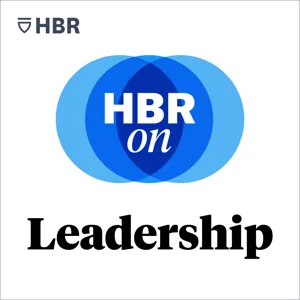Are Sailboats the Future of Shipping? The New, Old Tech Making Waves.

Explore "maritime industry" with insightful episodes like "Are Sailboats the Future of Shipping? The New, Old Tech Making Waves.", "How to Communicate in a Crisis — and How Not To" and "Gene Seroka on What’s Happening Now at the Port of LA" from podcasts like ""WSJ’s The Future of Everything", "HBR On Leadership" and "Odd Lots"" and more!


And there were other factors compounding the challenge. The El Faro was an old ship, about to be scrapped. Its owner, TOTE Maritime, was in the process of selecting officers to crew its new ships. Davidson and some of his officers knew the company measured a ship’s on-time arrival and factored that into performance reviews and hiring decisions.
When the SS El Faro tragically sank on October 1, 2015, it was the deadliest American shipping disaster in decades. But who was to blame for the tragedy and what can we learn from it?
Harvard Business School professor Joe Fuller discusses the culpability of the captain, as well as his fellow officers, and what it reveals about how leaders and their teams communicate under pressure.
Fuller used transcripts of the ship’s tape recorder to study the crew’s communication, allowing him unique access to every conversation with the captain and crew, as they struggled to decide the ship’s course.
“What you see is that different deck officers…have pretty direct conversations with Davidson about the storm. But at no time, do any of them say to Davidson, ‘Captain, I’m really concerned, this course is taking us right on a collision with…the storm.’ And I think we should adopt a different course of action,” Fuller notes.
If you’re trying to lead your team through a crisis or make good decisions under pressure, this episode is for you.
Key episode topics include: leadership, leadership styles, crisis management, operations and supply chain management, power and influence, business failures, communication.
HBR On Leadership curates the best case studies and conversations with the world’s top business and management experts, to help you unlock the best in those around you. New episodes every week.
· Listen to the original Cold Call episode: Management Lessons from the Sinking of the SS El Faro (April 2022)
· Find more episodes of Cold Call
· Discover 100 years of Harvard Business Review articles, case studies, podcasts, and more at HBR.org
]]>
There's no single measure we can look at to tell us whether supply chains are improving or not. There are some signs of easing (such as the number of containers sitting at the ports) but other signs are still getting worse (such as the number of ships waiting to dock). So what's really going on? And are the White House's efforts at easing the strain actually bearing fruit? On this episode we speak with Gene Seroka, Executive Director of the Port of Los Angeles, who we last spoke to in the summer, about the actual situation on the ground.
See omnystudio.com/listener for privacy information.
Stay up to date
For any inquiries, please email us at hello@podcastworld.io